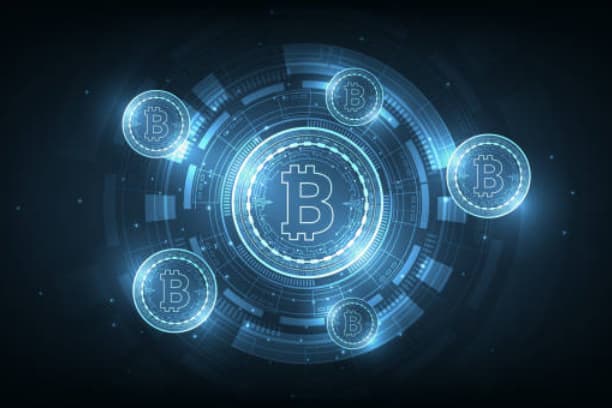Bitcoin Halves Rewards Specific Data and Impacts
The Bitcoin halving event is an important event in the cryptocurrency world, occurring every four years. Each halving affects Bitcoin's mintage, market supply and demand, which in turn affects its price and miner rewards.In 2024, Bitcoin will see its next halving, with block rewards decreasing from 6.25 Bitcoin to 3.125 Bitcoin. What are the exact numbers of the halving? How does it affect the Bitcoin price, miners, and the cryptocurrency ecosystem as a whole? In this article, we'll dive into the specific data and impact of the Bitcoin halving reward.

Bitcoin halving bonus specific data
Each block of the Bitcoin network rewards miners with a certain number of bitcoins. These rewards start out at 50 bitcoins, but the rate at which bitcoins are issued gradually decreases over time. The mechanism of halving is an important design in the Bitcoin protocol, which provides for a halving of rewards to occur every 210,000 blocks. To date, there have been three halving events, which are:
- First halving (November 2012): from 50 to 25 bitcoins.
- Second halving (July 2016): from 25 to 12.5 bitcoins.
- Third halving (May 2020): from 12.5 to 6.25 bitcoins.
The next halving is expected to happen in 2024, with block rewards further reduced to 3.125 bitcoins.
Factors affecting halving
- Bitcoin supply cap: the total number of bitcoins is fixed at only 21 million bitcoins, which means that halving events reduce the rate at which new bitcoins are issued each time.
- Miner Rewards: cut in half directly affects miners' income. As block rewards are reduced, miners will become more reliant on bitcoin transaction fees to make ends meet.
- Inflation: halving leads to a gradual decline in bitcoin's inflation rate, and the reduced supply helps to increase bitcoin's scarcity.
The Impact of Bitcoin Halving on Prices
The impact of a Bitcoin halving event on the price has historically been a focus of investors and analysts. Historical data shows that the price of bitcoin usually goes through an upward cycle after each halving. While the halving itself does not directly affect the price, changes in market sentiment and miner behavior through supply and demand can lead to fluctuations in the price of bitcoin.
Changes in supply and demand
The halving has slowed the supply of bitcoin, which could cause the price to rise in the long run, especially if demand remains stable or grows. An example:
- After halving in 2012: the price of Bitcoin has risen about 100 times in 1 year.
- After halving in 2016: the price of Bitcoin rose about 20 times over the next two years.
- After halving in 2020: the Bitcoin price surpassed an all-time high of $60,000 in 2021
The effects of this supply/demand imbalance usually take time to show up, but historical trends show that halving is often the catalyst for a bullish market.
Market Sentiment and Investor Behavior
Market sentiment usually reacts strongly before and after each halving. Investors often respond to halving with a "buy the news, sell the facts" strategy, which means that the price of Bitcoin may rise before the halving and then pull back after the halving. Expectations of future demand for Bitcoin can also influence price movements, especially when large institutional investors enter the market.
Impact of Bitcoin Halving on Miners
Halving directly affects the income of miners. Miners earn rewards by verifying and packing blocks, and a portion of the rewards come from block rewards. As the halving occurs, the amount of bitcoin rewards miners can earn per block mined will decrease, which has a significant impact on miners' operating costs and profit models.
Miner Costs and Profitability Models
As bitcoin block rewards decrease, miners' incomes will fall accordingly. In order to remain profitable, miners must rely on more efficient mining machines and lower power costs. Miners may also rely on transaction fees for their revenue, especially when block rewards are low and transaction fees become a significant part of miners' revenue.
For example, the halving in 2020 shifts miners' earnings from simple block rewards to higher transaction fees, which prompts more miners to invest in advanced mining technology to increase productivity. By 2024, miners will face even tougher competition, and only the technologically advanced miners will be able to remain profitable in the face of declining rewards.
Miner Exit and Market Reorganization
Halving may also cause some miners to exit the market, especially smaller miners who cannot afford the cost pressures. As miners exit, the remaining miners may receive higher rewards, which sometimes promotes further centralization of the network. Thus, the halving event not only affects miners' incomes, but could also potentially have an impact on the decentralization of the Bitcoin network.

The Impact of Bitcoin Halving on the Cryptocurrency Ecosystem
The halving doesn't just affect Bitcoin itself, but can have a volatile effect on the entire cryptocurrency ecosystem. For example, other projects and tokens based on the Bitcoin blockchain (e.g., Litecoin) will also be affected by the halving. The cryptocurrency market tends to experience a "cascading effect," where changes in the price of Bitcoin drive fluctuations in other major currencies.
Impact on other cryptocurrencies
The halving of the cryptocurrency is usually accompanied by a movement of funds in the market, as investors may move funds from bitcoin to other digital currencies or engage in arbitrage trading between bitcoin and other currencies. Such flows may lead to short-term price volatility in some cryptocurrencies, or even a "cryptocurrency bull market".
The push for blockchain technology
The attention caused by the halving event has also driven further development of blockchain technology. As the Bitcoin block rewards decreased, more developers and project teams began to investigate ways to improve the efficiency and scalability of the blockchain. For example, second-tier solutions such as the Lightning Network have gained widespread attention, solving the problem of bitcoin transaction congestion and opening up new possibilities for the long-term development of bitcoin.
summarize
Bitcoin's halving bonus is more than just a technical event; it has far-reaching implications for the price, miners' revenues, market sentiment, and the cryptocurrency ecosystem as a whole. Historically, halving has typically been a catalyst for bitcoin price increases, but the challenges for miners are also increasing. In future halving events, miners and investors will need to pay more attention to market movements and be prepared for any changes that may occur.
For investors, understanding the mechanism and impact of the halving will help them develop a more rational and scientific investment strategy, while miners will need to keep an eye on the balance between cost and revenue to ensure that they remain competitive after the halving. The entire cryptocurrency industry is moving forward with the new opportunities and challenges brought about by the halving of Bitcoin, and we will see what happens.







